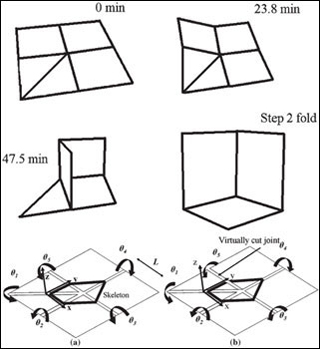
Mastery of system response characteristics and manipulation allows impulses to be applied to a 2-D membrane to create a 3-D MEMS structure. (Image courtesy of IEEE. Used with permission.)
Instructor(s)
Prof. Franz Hover
Prof. David Gossard
Prof. George Barbastathis
MIT Course Number
2.004
As Taught In
Fall 2007
Level
Undergraduate
Course Description
Course Features
Course Description
Upon successful completion of this course, students will be able to:
- Create lumped parameter models (expressed as ODEs) of simple dynamic systems in the electrical and mechanical energy domains
- Make quantitative estimates of model parameters from experimental measurements
- Obtain the time-domain response of linear systems to initial conditions and/or common forcing functions (specifically; impulse, step and ramp input) by both analytical and computational methods
- Obtain the frequency-domain response of linear systems to sinusoidal inputs
- Compensate the transient response of dynamic systems using feedback techniques
- Design, implement and test an active control system to achieve a desired performance measure
Mastery of these topics will be assessed via homework, quizzes/exams, and lab assignments.
Other Versions
Other OCW Versions
OCW has published multiple versions of this subject. ![]()


